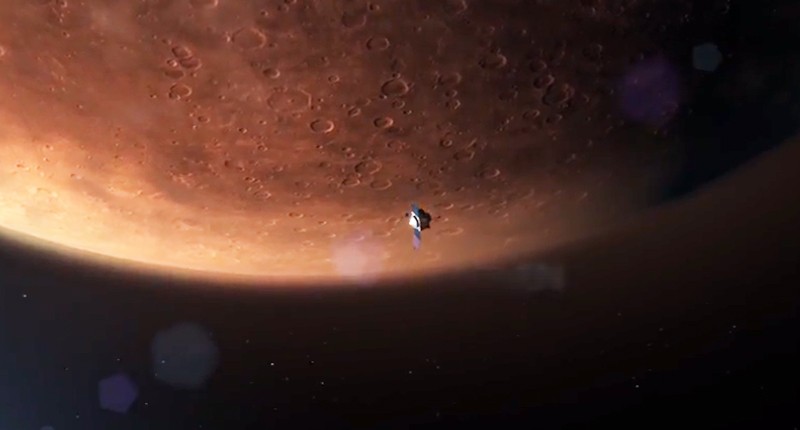
© NASAMars simulation
Scientists at
NASA's Jet Propulsion Laboratory are preparing all of their assets orbiting and roving Mars to observe and collect data from what they call a "once in a lifetime" viewing of a never-seen-before comet passing within 87,000 miles of the surface of the planet. Comet C/2013 A1, also known as comet Siding Spring, will pass Mars on Oct. 19, at less than half the distance between Earth and our moon and less than one-tenth the distance of any known comet flyby of Earth.
"This is a cosmic science gift that could potentially keep on giving, and the agency's diverse science missions will be in full receive mode," said John Grunsfeld, astronaut and associate administrator for NASA's Science Mission Directorate in Washington. "This particular comet has never before entered the inner solar system, so it will provide a fresh source of clues to our solar system's earliest days."
According to NASA, Siding Spring came from the Oort Cloud, a spherical region of space surrounding our sun and occupying space at a distance between 5,000 and 100,000 astronomical units, and believed to be material left over from the formation of the solar system 4.6 billion years ago. Scientists hope to use this opportunity to learn more about the materials, including water and carbon compounds, that existed during the solar system's formation.
NASA is repositioning their Mars orbiters, using the planet as shield so that they are not damaged by the ice and dust cloud trailing Siding Spring.
"The hazard is not an impact of the comet nucleus itself, but the trail of debris coming from it. Using constraints provided by Earth-based observations, the modeling results indicate that the hazard is not as great as first anticipated. Mars will be right at the edge of the debris cloud, so it might encounter some of the particles - or it might not," said Rich Zurek, chief scientist for the Mars Exploration Program at NASA's Jet Propulsion Laboratory (JPL) in Pasadena, California.
Scientists note that Mars' thin atmosphere should protect NASA's Mars rovers Opportunity and Curiosity from comet dust, if any reaches the planet. Both rovers are scheduled to make observations of the comet. Earth-based and space telescopes, including the Hubble Space Telescope, and the agency's astrophysics space observatories - Kepler, Swift, Spitzer, Chandra, along with the ground-based Infrared Telescope Facility on Mauna Kea, Hawaii - will also be tracking the event.
Scientists hope to learn more about how Siding Spring's own atmosphere interacts with the upper atmosphere of Mars, as well as study the particulate dust left behind.
Watch the video below uploaded to YouTube by NASA's Jet Propulsion Laboratory:

Reader Comments
to our Newsletter